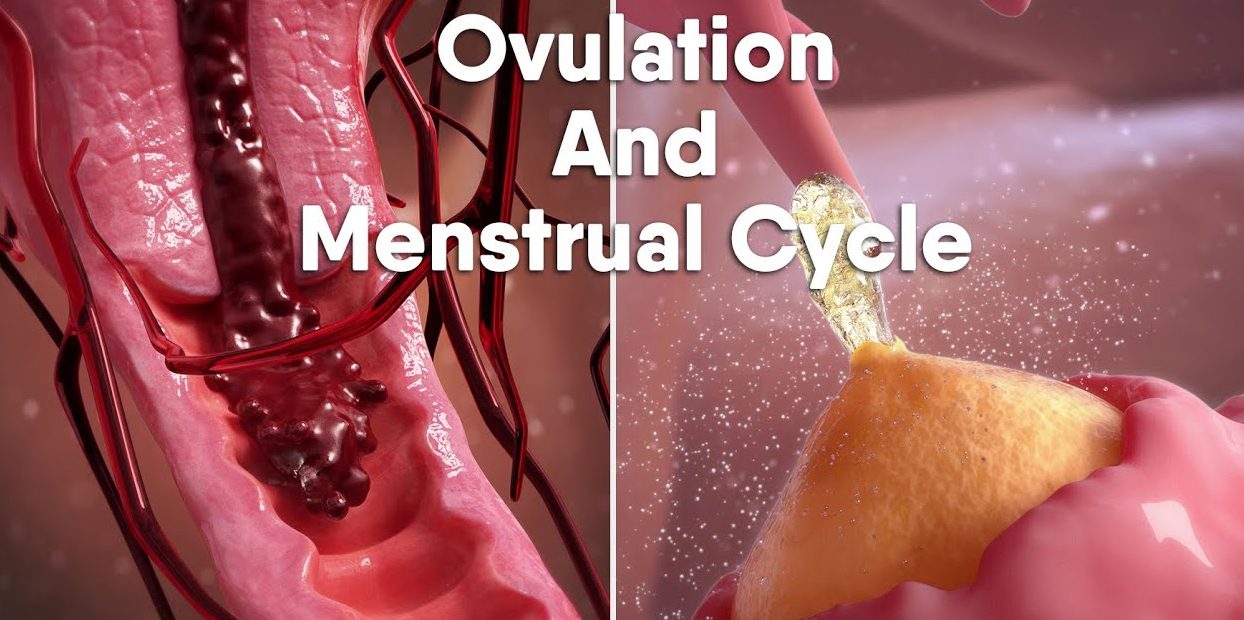The menstrual cycle, often referred to as the period, is a monthly process that plays a vital role in female reproductive health. It involves several stages that prepare the body for a potential pregnancy, beginning with ovulation and ending with menstruation. Understanding these stages can offer insight into a woman’s reproductive health and help address issues like fertility or menstrual disorders.
The Menstrual Cycle Overview
The menstrual cycle typically lasts between 21 and 35 days, though variations are normal. The cycle is divided into four main phases: the menstrual phase, the follicular phase, ovulation, and the luteal phase. Each phase has distinct hormonal changes and physiological events that prepare the body for the possibility of pregnancy.
The Menstrual Phase
The first phase of the menstrual cycle is menstruation itself. This phase occurs when the unfertilized egg from the previous cycle is shed from the uterus, accompanied by the breakdown of the uterine lining (endometrium). The shedding of this lining, along with blood and mucus, is what constitutes a woman’s period. This phase usually lasts 3-7 days, depending on the individual.
The menstrual flow varies in intensity and duration, with some women experiencing lighter periods and others having heavier flow. Hormones like estrogen and progesterone are at their lowest levels during this time, leading to physical symptoms such as cramping, fatigue, and mood changes.
The Follicular Phase
The follicular phase begins on the first day of menstruation and continues until ovulation. During this phase, the pituitary gland in the brain releases follicle-stimulating hormone (FSH), which stimulates the ovaries to produce several follicles. Each follicle contains an immature egg, but usually, only one will mature fully. The maturing follicle produces estrogen, a hormone that helps rebuild the uterine lining after menstruation.
As estrogen levels rise, they signal the pituitary gland to reduce FSH production and start releasing luteinizing hormone (LH). Estrogen also thickens the cervical mucus, which helps sperm travel more easily toward the egg, should fertilization occur. This phase typically lasts between 7 and 21 days, depending on the length of the individual cycle.
Ovulation
Ovulation is a critical event in the menstrual cycle, occurring around the middle of the cycle, usually between days 12-16 for women with a 28-day cycle. During ovulation, the mature follicle ruptures and releases a fully developed egg, which then travels down the fallopian tube toward the uterus. The release of the egg is triggered by a surge in LH levels.
This phase is the most fertile time in the cycle, as the egg is viable for fertilization for about 12-24 hours. If sperm is present in the fallopian tube during this time, fertilization can occur, resulting in pregnancy. Many women track ovulation through basal body temperature, ovulation predictor kits, or changes in cervical mucus to pinpoint this peak fertility window.
Along with the release of the egg, estrogen levels start to decrease, while progesterone levels rise in preparation for potential implantation of a fertilized egg in the uterus.
The Luteal Phase
Following ovulation, the body enters the luteal phase, which typically lasts around 14 days. During this phase, the ruptured follicle transforms into a structure called the corpus luteum, which begins to produce progesterone. This hormone prepares the endometrium (uterine lining) for the implantation of a fertilized egg. If pregnancy occurs, the corpus luteum continues to produce progesterone to support the developing pregnancy.
If the egg is not fertilized, the corpus luteum degenerates, leading to a decrease in progesterone and estrogen levels. This decline triggers the shedding of the uterine lining, which marks the beginning of the next menstrual cycle.
Hormonal Regulation and Menstrual Health
The menstrual cycle is controlled by a delicate balance of hormones: estrogen, progesterone, FSH, and LH. These hormones communicate with each other to regulate the stages of the cycle. Any imbalance in hormone levels can disrupt the menstrual cycle, leading to irregular periods, missed cycles, or other reproductive issues.
Conditions like polycystic ovary syndrome (PCOS), thyroid disorders, and endometriosis can interfere with the normal hormonal regulation of the cycle. Stress, weight changes, and excessive exercise can also influence menstrual health. Therefore, it is essential for women to pay attention to changes in their menstrual patterns, as these can serve as indicators of underlying health issues.
The Role of Ovulation in Fertility
Ovulation plays a central role in a woman’s fertility. A regular ovulatory cycle is essential for conception, as it ensures that a healthy egg is available for fertilization. Couples trying to conceive often track ovulation to increase their chances of pregnancy. This can be done using various methods such as tracking basal body temperature, cervical mucus changes, or using ovulation prediction kits.
In some cases, women may experience anovulation, a condition in which the ovaries do not release an egg. This can result in infertility or irregular periods. Anovulation may be caused by hormonal imbalances, stress, or medical conditions like PCOS. For women with anovulation, fertility treatments such as ovulation induction with medications like Clomid may be used to stimulate egg production.
Conclusion
The menstrual cycle is a complex and essential process in female reproductive health. Ovulation, in particular, is crucial for fertility and plays a central role in determining when a woman is most likely to conceive. Understanding the phases of the cycle and recognizing hormonal changes can help women maintain their reproductive health and address any issues that may arise.
A regular menstrual cycle is a sign of overall health, but it is important to remember that cycle length, flow, and other factors can vary from person to person. If there are concerns about irregular cycles, infertility, or hormonal imbalances, it is important to consult a healthcare provider for proper diagnosis and treatment.



